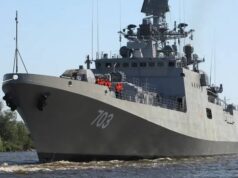India’s Nuclear Triad Matches The Super Powers In Capability

After China detonated a nuclear bomb at Lopnor in 1964, India too should have immediately started working on one. India possessed the capability to develop a nuclear one and the top Indian Scientist Homi Bhava even confirmed it. He died in a an air crash a few months later. Till today it remains a mystery whether the crash was a planned sabotage by an intelligence agency or just an accident.
Then India perforce moved slowly and it took another 10 years before Indira Gandhi ensured that an Indian nuclear test took place in 1974. Here more than the Chinese, it was the Nixon ordered venturing of nuclear powered and nuclear weapons armed USS ENTERPRISE into the Bay of Bengal during the 1971 war with Pakistan that determined the Indian resolve.
There after in spite of all the planned strategy by the Western Powers, India indigenously developed not only the nuclear technology but also a parallel missile technology. This was necessary to not only keep Pakistan and China at bay but to also prevent any future blackmail of any kind by any power on this Earth.
Being a developing economy but still a formidable military power, the developed countries tried many strategies to prevent the rise of India as a nuclear and missile power.
These strategies did slow down the progress but did not work and after attaining a break through in missile technology, India went ahead to carry out a multiple nuclear and thermonuclear tests in 1998, in one go.
Of course Pakistan too carried out a nuclear test right after in which Chinese had a big role.
Now India maintains a formidable nuclear triad—that is a three-pronged nuclear weapon delivery system that utilizes a diverse array of means for delivering nuclear payload very accurately on a target.
India has land-based nuclear missiles with 4000 km capability and by this year will be deploying Agni V which has 8000km + capability. Submarine-launched missiles with 1500 km are already deployed and soon India will be arming its SSBNs with 4000 km nuclear armed missiles. Within a year or two, IAF will have the capability to launch a cruise missile carrying nuclear warhead to say 1500 km.
Air delivery was India’s original nuclear delivery prong and is still being retained. Indian Dassault Mirage-2000s remain the primary vehicles capable of delivering nuclear bombs from the air with may be a SU30 MKI marked for this role.
The CEP of the Indian missiles are as accurate if not better than any of the other countries and to top it India has also developed its own regional navigation system and soon will have its own global positioning system.
From land, India has a formidable missile launch capability to deter China and if required to strike back too. These are silo based, rail based and also cannisterized for deployment by road.
In order to maintain a credible threat against China, India has pursued a strategy of improving the range inter-continental ballistic missiles to now reach 8000km +, thus attaining the capability to strike any corner of China.
The Agni missile family forms the backbone of the land-based nuclear triad. They currently range from Agni 1 to Agni-V. Now Agni 6 which will be having multiple re entry vehicles each carrying a nuclear weapon is under advanced stages and soon there should be a full range ICBM too cover the entire planet.
The jointly Russian-Indian developed BrahMos hypersonic missile with 400km range has already become a game changer only on the Indo Tibetan border. The air launched version mounted on naval ships and on SU30 MKI has given a clear dominance to the Indian Navy in the Indian Ocean Region. Soon there will be a 800 km range BRAHMOS too, extending the reach into the Indo Pacific.
According to a quoted CIA report, “Russia has significantly supported in developing India’s nuclear programmes with nuclear submarine technology and equipment”.
Over all, India’s nuclear triad is a mix of capabilities—free-falling bombs, long-range and highly sophisticated missiles, and sub-launched missiles of 4000km capabilities and soon to increase to full ICBM range. Still, India is one of the preeminent nuclear powers in the world which still adheres to its own laud down NO FIRST USE POLICY.
“An NFU policy essentially constitutes a promise, backed by a survivable nuclear arsenal, to only use nuclear weapons in response to a nuclear attack,” explained a Carnegie publication. “The logic is simple and effective: you don’t nuke me, and I won’t nuke you. India and China both have declared no-first-use policies, whereas Pakistan and the United States, among others, do not rule out the first use of nuclear weapons in a conflict.”
Despite India’s formidable nuclear arsenal, India had since 2003 maintained it will not use said weapons of mass destruction first, but strictly in a retaliatory manner for deterrence.
However seeing that Pakistan understands no other language, in 2019, Indians called their no first use policy into question when Indian Defence Minister Rajnath Singh said that “Till today, our nuclear policy is ‘no first use’.
What happens in future depends on the circumstances.” This statement is an example of deliberate strategic ambiguity, to show to Pakistan, China and the rest if the Nuclear powers that now India is a different ball game.




